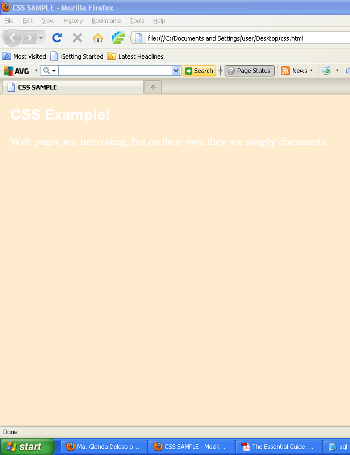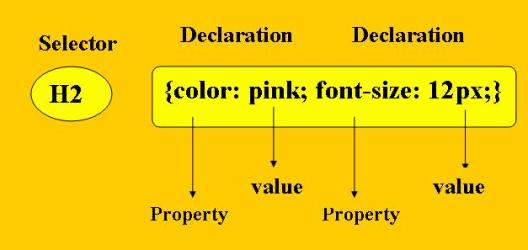What is CSS?
Cascading Style Sheets (CSS)
is a style sheet language used to describe the presentation semantics (the look and formatting) of a document written in a markup language. Cascading Style Sheets (CSS) is a simple mechanism for adding style (e.g., fonts, colors, spacing) to Web documents. CSS is the W3C standard for defining the visual presentation for web pages.
CSS Example:
|
<html> <head> <style type=”text/css”> body p </style> <body> <<h2> CSS Example! </h2> </body> |
Try it on yourself to see how it works! Just go to notepad copy & paste the above code then save as .html or .htm. Take a look for the picture below:
CSS Syntax
A CSS rule has two main parts: a selector, and one or more declarations:
The selector is normally the HTML element you want to style. Each declaration consists of a property and a value. The property is the style attribute you want to change. Each property has a value.
CSS declarations always ends with a semicolon, and declaration groups are surrounded by curly brackets:
p
{
color:red;
text-align:center;
}



Vous avez de bons points il, c’est pourquoi j’aime toujours verifier votre blog, Il semble que vous etes un expert dans ce domaine. maintenir le bon travail, Mon ami recommander votre blog.
Mon francais n’est pas tres bon, je suis de l’Allemagne.
Mon blog:
rachat credit lyon aussi ficp Rachat de Credit